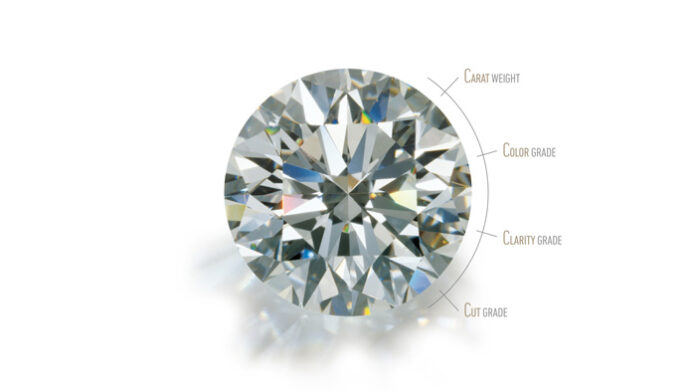When you finally find your true love, you can even give them the moon. But before you get there, the first prudent thing is to put a ring on that finger. Find a diamond that will enhance her beauty with a sparkling diamond. If this is your first time to get into the diamond world, you will probably get scared of being ripped-off or having your hard-earned cash go down the drain. If you are smart, educating yourself first will save you a big deal. Learn the 4Cs of a diamond, and you can use a diamond value calculator to determine how the sellers reach their prices.
All the 4Cs that include Cut, Color, Clarity, and Carat, determine the quality and the pricing of the precious diamonds. So, it’s imperative to learn more about them for you to understand your investment. The 4Cs relatively interact with each other to give the best of a diamond’s quality and value. It’s almost impossible to decipher one of them without touching the others. However, Cut has a significant impact above all the other C’s because it shows the diamond’s brilliance and its beauty.
Diamond grading
One of the essential items you will study about diamond grading is the particular entities that use their laboratories to grade them. GIA and AGS are the most popular since they use the highest standard by using the most sophisticated grading systems. They are also consistent, and most diamond sellers rely on their grading reports to set their prices.
They will use the diamond value calculator to conclude the final pricing. Knowing some basics of what they use on grading can help you compare diamonds and get what you want quickly.
Although there are some existing universal terminologies in the standard grading, there are some lab entity variations.
Cut
According to experts, the Cut is one of the vital elements out of the other 4Cs. The diamond’s brilliance and fire highly depend on its Cut. A diamond cutter may focus more on the carat’s weight while leaving the stone too shallow or deep to allow a desirable reflection of light. With an excellent Cut stone, you can get a lovely sparkling piece even as you compromise the color, clarity, and carat.
Sometimes the cutting may aim to minimize the inclusions to improve the clarity. The Cut
is the focal point of choosing your ideal stone. It is the one that will determine the beauty of a diamond, and everyone wants to see that in their piece of jewelry. The most important thing is how the diamond appears on the naked-eye and not what the experts can see with a magnification device. It is not ideal to purchase a diamond that lacks the dazzling aesthetic. Brilliance and sparkle are the most significant feature of a diamond.
Color
GIA will grade diamonds from a scale of D (colorless) to Z (light color). Even those diamonds with varying colors will be among the whites as long as they are within D’s brackets to Z.
Sometimes you might wonder why there is a significant price difference between diamonds that look the same. It’s because of the color difference that you cannot see with your naked eyes. That’s what the sellers use to determine the pricing through color grading.
Regardless of the color grading, if the diamond appears colorless on its setting, then that’s enough. Ensure the stone is clear from any tint that may interfere with white or any colored
reflections. The color grades from D and closer will radiate to the diamond, while those closer to Z will distract the diamond’s sparkle.
NB: It is also crucial to note that particular colored-diamonds are valuable, such as the trendy pink and green stones. Their grading is different from the colorless diamonds.
Carat
There is an apparent misconception of carat measuring size rather than the weight. One carat of a diamond equals 200 milligrams. You will also find two of 1 carat being different in size, depending on their cuts. Although carat is a significant element to check when buying a diamond,
it’s the aesthetic that is more appealing. A stone may be heavy but lacks the sparkle needed.
How are diamond values calculated?
A diamond value calculator is a great tool that provides a price guideline for the diamond. Diamond wholesalers and people globally rely on it because it enlightens you with the diamond’s value and sets your expectation before stepping into a retail store.
Clarity
The clarity grading focuses on is (how clean the diamond is) if it has any blemishes or inclusions. The scaling includes Internally Flawless (IF), which means there are no internal or external imperfections found in the diamond. These types of diamonds are relatively rare. Then we have others like VS1 and VS2 that have slight imperfections (Very Slightly Included). However, if a stone is eye-clean, it is as good as it gets; as long as inclusion is not visible to an ordinary person unless they use a microscope.
In Conclusion, with the above information, now you must be confident in checking and evaluating a diamond’s quality using the 4Cs. You can get the right balance between quality and value. And you can avoid rip-offs by using a diamond value calculator that should tell you the price.






















